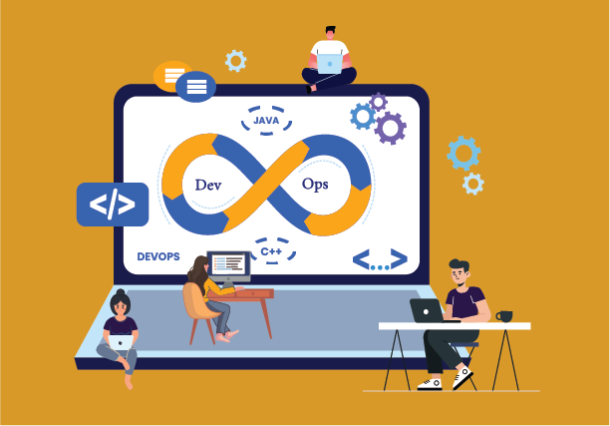Tactical Maneuvers for Seamlessly Integrating Salesforce DevOps Center into Environments
Take an adrenaline ride into the Salesforce DevOps Center, a vibrant environment where achievement is molded by talented collaboration and development blends with productivity. Salesforce DevOps turns into your direction assisting you with exploring the unknown domain of code deployment, continuous integration, and flawless teamwork. Creating an opus out of a whirlwind of codes and strategies is how Salesforce DevOps can be unlocked. We investigate the enigma of this course of action, disclosing proficient procedures that convert development work processes into pleasant arrangements of effectiveness and grace. Deliberate a DevOps culture where your Salesforce applications are consistently incorporated and each line of code beats to the beat of your business objectives.
We investigate the enigma of this course of action, disclosing proficient procedures that convert development work processes into pleasant arrangements of effectiveness and grace. Deliberate a DevOps culture where your Salesforce applications are consistently incorporated and each line of code beats to the beat of your business objectives.
But wait, this isn’t your ordinary tech handbook. There isn’t any dull, dry prose here. Rather, expect a story that is entwined with tales from the channels, surprising unexpected developments, and genuine encounters to keep you intrigued all along. We are recounting to you an enthralling story, with deterrents filling in as the unexpected developments and success filling in as the sensational epilogue, rather than merely offering guidance. Hang tight, there’s more. Equip thyself for engaging case studies, anecdotes from the trenches, and real-world experiences. We’re not only here to lecture; we’re here to completely submerge you in the heart-beating reality of Salesforce DevOps. Since you have your symbolic machete, let’s go ahead and forge ahead collectively to conquer the snags in our way and understand the maximum capacity of your Salesforce development experience.
Here, success isn’t only an objective but rather a thrilling peregrination. Welcome to a savant that goes beyond the ordinary. Will you be able to simplify DevOps and take on what’s in store? The expedition begins now.
An Insider’s Look into Salesforce DevOps Center’s Best Practices and Strategies
The ingenious Salesforce DevOps Center platform is planned to completely transform the deployment and development lifecycle inside the Salesforce ecosystem. It goes about as the center point for organizations attempting to improve and streamline their DevOps strategies, ensuring a smooth and successful transition from developing code to refining the client experience. Fundamentally, the DevOps Center Salesforce functions as a helpful focus that coordinates processes for development, testing, and deployment. It works with the smooth operation of cross-functional teams, destroying organizational silos and advancing a continuous improvement mindset. With the assistance of this unified platform, coordinated effort, code sharing, and correspondence are made easier, which shortens the time it takes to create and launch Salesforce apps.
Version control and release management are two of Salesforce DevOps Center’s essential elements. The platform offers amazing tools for dealing with various application versions, monitoring codebase changes, and planning controlled and consistent releases. This ensures code respectability and gives development teams the tools they need to apply agile methodologies. The groundwork of DevOps Center Salesforce is automation, which empowers organizations to automate dreary processes and improve on unpredictable workflows. The platform liberates teams from difficult, manual errands so they can focus on innovation. Instances of automated testing and deployment pipelines are given. Thus, the development pipeline turns out to be more reliable and versatile while additionally expanding productivity and diminishing errors.
Salesforce DevOps Center is a key empowering enabler for organizations looking to use the Salesforce platform, not just a tool. It works with communication, unites the development and operations teams, and offers the framework expected to flawlessly apply continuous integration and delivery (CI/CD) strategies. Salesforce’s dedication to empowering organizations to flourish in the rapidly changing domain of digital transformation is exemplified by the Salesforce DevOps Center, which flaunts an intuitive interface and robust features.
Uniting Forces with DevOps Center Salesforce for Swift, Seamless, and Sustainable Software Delivery
With the DevOps Center Salesforce, a game-changing tool that completely reimagines the development lifecycle, you can release the capability of further developed effectiveness and streamlined cooperation. The DevOps Center is an incorporated centralized hub made to facilitate and improve the Salesforce environment’s entire development process. This advanced platform offers a unified area for development, testing, and deployment operations by coordinating consistently with your ongoing Salesforce climate. A strong and adaptable development process is advanced by the wide range of highlights that are accessible to clients, like automated testing, continuous integration, and version control. It’s extremely simple to get everything rolling; go to your Salesforce instance’s DevOps Center. Teams can cooperate progressively here, ensuring that all stakeholders agree in each phase of the development cycle. Use version control to keep an accurate audit trail, track modifications, and manage code changes effectively.
go to your Salesforce instance’s DevOps Center. Teams can cooperate progressively here, ensuring that all stakeholders agree in each phase of the development cycle. Use version control to keep an accurate audit trail, track modifications, and manage code changes effectively.
The DevOps Center’s immediate reconciliation of constant integration and delivery (CI/CD) pipelines is perhaps its most prominent feature. Accordingly, the build and deployment processes can be computerized by developers, diminishing human error and stimulating the delivery cycle. Lay out consistent connections with notable version control systems, similar to Git, and set up exceptional pipelines that are customized to meet your remarkable necessities. Salesforce’s DevOps Center is something beyond a tool; an innovation accelerator that creates a cooperative atmosphere that upholds the development of development teams. With a centralized DevOps solution, you can enable your organization to make more noteworthy progress with your Salesforce projects while streamlining processes.
The Role of Salesforce DevOps Center in Shaping the Future of Development
Utilizing a high-level data model to arrange the mind-boggling dance of data, code, and collaboration, the Salesforce DevOps Center functions as the driving force of enhanced and compelling development processes. The data model is the primary player in this technological ballet; the structural foundation keeps everything together throughout the Salesforce development lifecycle.  The Salesforce DevOps Center data model is fundamentally an architecture that has been meticulously intended to encapsulate fluid teamwork. Source code, metadata, configurations, and user interactions are undeniably exemplified inside, bringing about a complicated ecosystem with precise interconnections between every one of the parts.
The Salesforce DevOps Center data model is fundamentally an architecture that has been meticulously intended to encapsulate fluid teamwork. Source code, metadata, configurations, and user interactions are undeniably exemplified inside, bringing about a complicated ecosystem with precise interconnections between every one of the parts.
The data model’s capacity to catch version control is a significant element that empowers developers to productively track modifications and oversee the development of their Salesforce projects. This gives teams the adaptability to cooperate while ensuring that each change is both recognizable and reversible, going about as a security net for experimentation error and creativity. Moreover, the data model smoothes out the development pipeline by controlling the mix of constant integration and continuous delivery (CI/CD) practices. Guaranteeing consistent progress of codebase changes from the development to the testing and deployment stages assists with limiting disturbances and facilitates the delivery of top-notch applications.
The data model in the Salesforce DevOps Center is a functioning member of the collaborative journey, not just a passive repository. It makes it easier for different development conditions to synchronize without a hitch, permitting developers to work at the same time without stressing over clashes. This granular level collaborative ethos empowers teams to work independently on specific highlights or modules, expanding efficiency and limiting bottlenecks. The data model of the DevOps Center Salesforce resembles a building director coordinating the ensemble of development, bringing teams, code, and methods together towards creativity. It’s more than just a model; it’s the key to delivering Salesforce DevOps’ maximum capacity and making each development project not just a project but a show-stopper.
Identifying the Niche Audiences Targeted by the Salesforce DevOps Center
For many experts looking to use the capability of DevOps techniques within the specific context of Salesforce development, the Salesforce DevOps Center fills in as a shelter. Offering a unified platform for collaboration and innovation, it serves many clients, including IT experts, release managers, developers, draftsmen, and Salesforce administrators. The DevOps Center offers practices and tools for Salesforce administrators to automate deployments, streamline configuration management, and assure the smooth running of Salesforce instances. To keep their Salesforce surroundings steady and versatile, they can utilize deployment pipelines, automated testing frameworks, and version control systems. The DevOps Center gives developers a playground for making versatile and compelling Salesforce applications. They can rapidly complete the development lifecycle, iterate on features with agility, and give excellent solutions for fulfilling business needs by using integrated development environments (IDEs), version control repositories, and constant integration pipelines.
Alternately, architects utilize the DevOps Center to make versatile and reliable Salesforce architectures. They construct versatile, adaptable, and flexible solutions that can be acclimated to changing business necessities by using deployment automation, monitoring tools, and the concepts of infrastructure-as-code. Release managers coordinate the DevOps Center’s deployment method, ensuring the effective and reliable distribution of updates among Salesforce conditions. To reduce risk and increase process productivity, they utilize release pipelines, automated testing suites, and change management systems. At last, the DevOps Center furnishes IT experts with a centralized hub for overseeing the Salesforce framework, working with consistent reconciliation with the rest of the IT scene, and ensuring adherence to security and governance norms.
Why Pattem Digital Leads the Pack?
Choose our DevOps services company, where quality is an unfaltering responsibility rather than just a goal. Put your digital projects in the possession of our advanced staff, where creativity and meticulous craftsmanship meet. As we direct a choir of consistent integration, continuous delivery, and transformative automation, feel unparalleled proficiency. Acknowledge the height of elegance while we assist you with negotiating the complicated universe of contemporary innovation and make custom solutions that address your issues as a whole. Select us, where prestige is a given rather than a choice.





